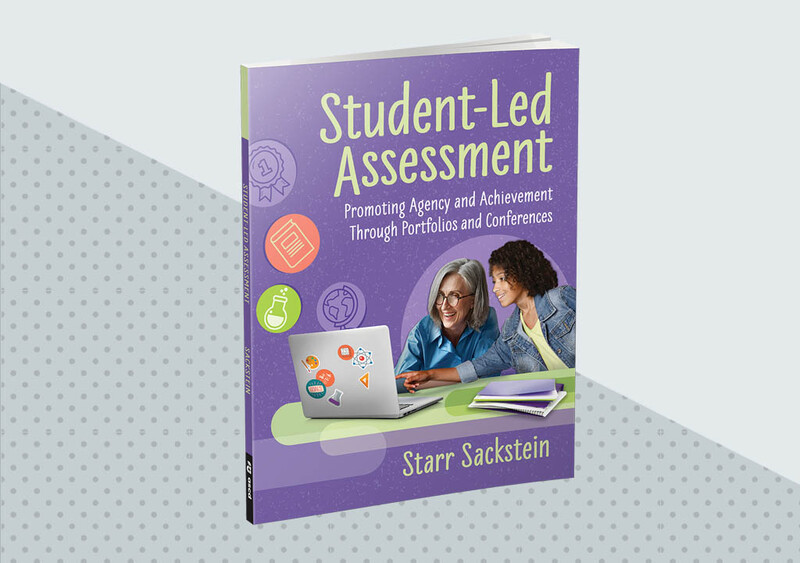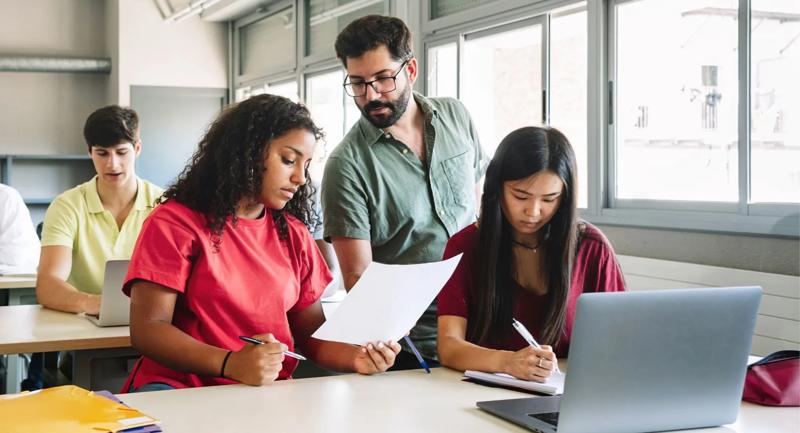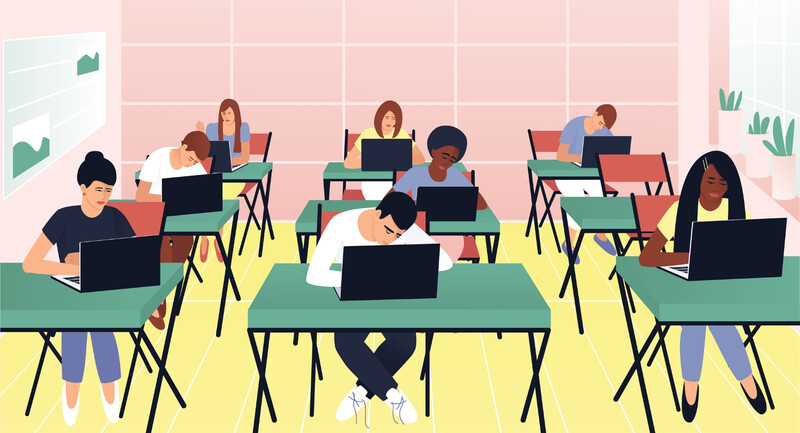Who knows what they have learned better than the learner? When equipped with the right academic vocabulary and a keen focus on their growth over time, students can make visible the insights they have gained through various learning opportunities. As educators, we play a crucial role in creating opportunities for students to practice metacognitive skills, allowing them to gain insights into their own learning. Subsequently, educators can assist students in expressing their understanding and setting goals that contribute to their academic success.
In today's education landscape, fostering student agency and achievement is paramount. One powerful tool that has gained significant recognition is student-led assessment. In Chapter 4 of Student-Led Assessment: Promoting Agency and Achievement with Portfolios and Conferences, I delve into the transformative potential of portfolios as dynamic workspaces that move beyond mere collection folders of student work. Instead, portfolios can empower students, enhance their learning experience, and promote authentic assessment practices. The Potential of Portfolios
Portfolios are not just a collection of student work. They are a window into a student's growth and development over time. It is important to involve students in the curation process, allowing them to take ownership of their learning journey. By actively selecting and reflecting on their work, students develop metacognitive skills, become more self-aware, and develop a deeper understanding of their strengths and areas for improvement.
In my high school English and journalism classes, I taught students, starting at the beginning of the year, the power and necessity of reflection in the learning process. We worked hard to practice zeroing in on specific learning outcomes and how to identify them in their own work. I then scaffolded the reflection process, and throughout the year, students had multiple opportunities to share their progress through written reflections and portfolio conferences. At the end of the school year, students had a choice of how they wanted to demonstrate their last reflection: written, video, audio, in-person, or any other way they felt best demonstrated comprehension of their learning.
Portfolios are not just a collection of student work. They are a window into a student's growth and development over time.
In this video, a high school senior in my AP English class reflects on a year of learning as she prepares for her exit presentation before graduation. Consider how she shares her growth in specific skills with evidence that supports what she is saying. She is confident and feels good about her learning experiences—even when they weren’t her best. Portfolios and student-led conferences offer positive learning experiences that underscore each learner’s value and belonging in the classroom environment. It isn’t just that portfolios represent the most authentic assessment learning; they present a mirror for students to watch their growth over time. Nothing is more motivating than seeing your own progress in learning. That doesn’t mean some pieces don’t express struggle, as productive struggle is an important part of the process. A portfolio presents a full story of the experience, with feedback and revisions, and can chart a student’s progress meaningfully.
Creating a Culture of Reflective Practice
Central to student-led assessment is the integration of reflective practice. When students engage in thoughtful self-reflection, individually and collaboratively, they can articulate their learning goals, monitor their progress, and make informed decisions about their next steps. By nurturing a culture of reflection in the classroom, students become active participants in their own learning, leading to increased motivation and a sense of agency. We can scaffold the reflection process to allow students to focus on learning goals, targeting evidence that supports their assertions. We do this in steps to achieve one finished reflection (It may look different depending on the age of your students):
Ask for a summary of what they believe the learning experience asked them to do and why.
Focus on a step-by-step explanation of how they completed the task, looking at challenges that have arisen and how they overcame them.
Reflect on specific goals and/or standards, competencies, or content they learned during the experience using examples from their learning as support.
Have students self-assess using criteria in a rubric.
To see this process in action, check out this video that explains how to teach students to reflect. By nurturing a culture of reflection in the classroom, students become active participants in their own learning, leading to increased motivation and a sense of agency.
Teachers should use a student’s reflection as a means to provide differentiated feedback while reviewing the student’s work. In other words, make sure to read the student's reflection before looking at their assignment. Get an idea of what the student was working on and how they felt about their learning, and then, through their lens, provide personalized feedback in conversation with what they shared in the reflection. This reflection process will prepare students to converse about their learning in a conference, offering a clarifying conversation with the teacher. As in the earlier video, the student can revisit their learning in the portfolio and reflect on why they selected individual pieces to demonstrate their growth over time.
The Power of Conferences
Once a student has completed the self-reflection process, the teacher can meet with them to review the portfolio and discuss the student’s goals and learning outcomes. These conferences are pivotal in student-led assessment, providing a platform for meaningful dialogue between students and teachers. It is essential to shift the traditional power dynamics during conferences, allowing students to take the lead. By actively involving students in the assessment conversation, educators gain valuable insights into their understanding, thought processes, and areas of growth. These conferences foster trust, build relationships, and empower students to advocate for themselves, ultimately leading to a more holistic and accurate assessment of their abilities.
It is essential to shift the traditional power dynamics during conferences, allowing students to take the lead.
It will not be easy for most students, regardless of age, the first time they try to have these conversations. Most students from traditional learning environments aren’t used to being asked about their learning this way. So, teachers will need to scaffold the conference process. I give my students pointed questions beforehand that help them reflect purposefully in preparation for our conference. Here are a few questions and prompts I have used:
Discuss the challenges you are having in this class. Focus on specific learning experiences.
What is the feedback you have received on your work?
Which standards would you say you are currently meeting?
Which units do you feel have been most useful so far?
Reviewing their answers before the conferences allows me, as the teacher, to preview student experiences and prepare clarifying questions about what students might have missed or not understood. During the student-led conferences, I can focus on what the student is saying and dive deeper where necessary, collecting more information about the scope of their learning experience. The ratio of student-to-teacher talk time varies depending on what time of year it is. For example, early in the year, the conferences are longer. Students are first getting used to talking about their learning this way and require a little more support from the teacher. In late October, I may be talking 35 percent of the time, and the student will speak 65 percent of the time. As the year continues, my role in the conversation grows less and less until the last conference, where I only speak about 5 percent of the time, and the student is doing the rest.
Authentic Assessment in Action
Student-led assessment through dynamic portfolios and conferences goes beyond traditional grading systems, embracing an approach to evaluation that more authentically reflects student learning. This shift enhances student learning and recognizes and values different forms of expression and achievement. There isn’t just one kind of valid assessment; more educators need to be aware of their options to choose the best ones or teach their students to select the ones that best demonstrate their learning. Dynamic portfolios and conferences can unlock the full potential of student-led assessment and create a more student-centered learning environment.
Student-Led Assessment
This lively and comprehensive guide provides the tools educators need to help students compile and present evidence of learning through portfolios and student-led conferences—from templates and rubrics to personal testimonials, reflection questions, and activities.









